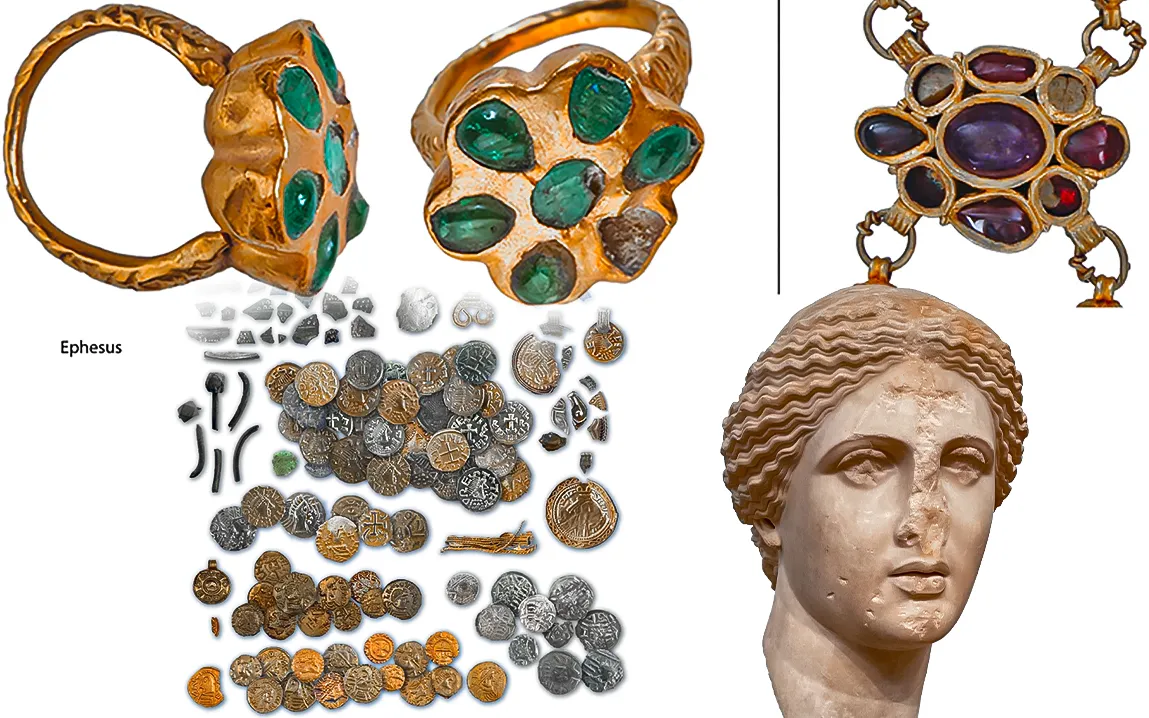A new archaeological study suggests Britain’s Pagan roots endured longer than previously thought, thanks to surprising finds in East Anglia.
A Hoard with Hidden Stories
A stash of Roman-era jewelry and silverware found in Thetford Forest, East Anglia, is challenging long-held beliefs about the spread of Christianity in Britain. According to a new paper published in the Journal of Roman Archaeology, evidence from the site indicates that Pagan religious practices remained active in Thetford until the fifth century, far later than historians had assumed.
The treasure, first unearthed in 1979 by a metal detectorist illegally searching a construction site at Gallows Hill, included 81 opulent items: 22 gold rings, finely crafted gold jewelry, and 36 silver spoons and strainers. These items now reside at the British Museum.
Pagan Symbols Hidden in Plain Sight
Professor Ellen Swift of the University of Kent, who authored the new study, says there’s compelling evidence that the hoard was buried in the fifth century, not the late fourth, as earlier believed. The presence of religious inscriptions and ritual objects, combined with the context of the site, points to a functioning Pagan cult center that endured into a new century.
“Since wider evidence found at the site confirms the religious context previously established by inscriptions on the spoons within the hoard, this means, remarkably, that the re-dating of the Thetford hoard suggests a Pagan cult center survived there into the fifth century,” Swift noted. “The site’s economic assets, indicated by the value and variety of the hoard, also show that it may have wielded significant power and authority locally.“
Connections Across the Roman World
To support the new timeline, Swift compared the Thetford objects to those found in other Roman sites across Europe, especially the fifth-century Hoxne hoard, also held at the British Museum. The results revealed that Thetford’s artifacts are stylistically similar to finds from as far afield as the Balkans and northern Italy.
For instance, a necklace with conical beads likely originated from southeastern Europe, while some of the latest finger rings appear to be from regions in or near northern Italy. The eclectic mix of styles and origins challenges the idea that post-Roman Britain was cut off from the wider world.
A Widespread Elite Culture
Much of the jewelry reflects a “Mediterranean Roman” aesthetic, suggesting a shared elite culture across the late Roman Empire. This unified design language offers further proof that Britain maintained strong ties to continental Europe even as the empire declined.
Rethinking Britain’s Pagan Past
This new interpretation of the Thetford hoard not only alters the timeline of religious change in Britain but also hints at the complexity and resilience of Pagan institutions. Rather than fading quietly in the wake of Christianity, Pagan centers like Thetford may have continued to thrive into the early medieval period, preserving a spiritual tradition long thought lost.



